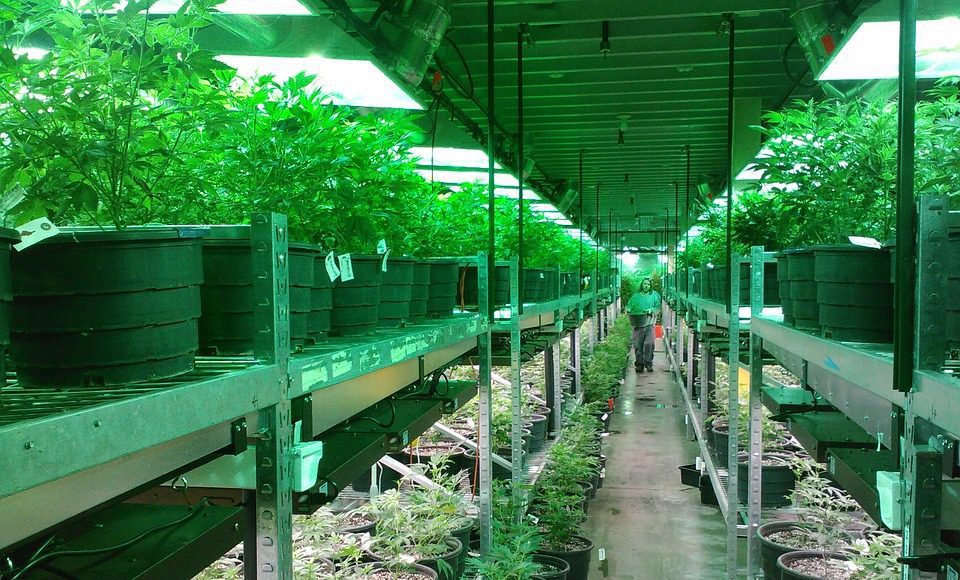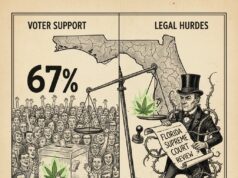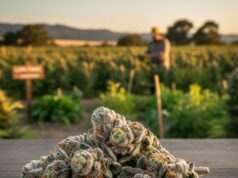Editors note: This is a guest post, and does not reflect general staff opinion.
Environmental, social, and governance (ESG) issues are increasingly more meaningful to consumers and shareholders. That said, the notion of sustainability is popular and attractive. Everyone wants to be green — or at least put on that they’re socially conscious. But what does going green honestly mean to a cannabis dispensary in the US, from California to New York? This post explores what it means to be green and operate a sustainable dispensary.
Involving your team in creating a green standard
Many elements trickle down from an organization’s leadership, from attitudes and behaviors to communication styles and habits. A sustainable dispensary must have directors and officers who foster a workforce environment with sustainable practices. It’s far more than merely touting eco-friendly ideas. Instead, this endeavor starts at the top and trickles down with actionable information and ongoing training.
Some individuals misunderstand sustainability, assuming it’s a quick trip to the recycle bin instead of the garbage. While these mini-habits are excellent starts, operating a successful sustainable dispensary is more in-depth than that. For starters, leaders should include sustainability in their business strategy, financial planning, and investments.
Furthermore, sustainability isn’t the only healthy workforce habit involving teams nowadays. For example, leaders encourage workers to adopt cybersecurity best practices and inclusivity norms daily. Across many industries, these meaningful endeavors must be genuine. In short, going green starts at the top.
Communicating openly about social responsibility
Brands across the globe communicate openly about their sustainability best practices. Some are more notable than others. For example, Levi Strauss & Co., founded in 1853 and known worldwide for its Levi’s jeans, has long advocated for sustainability. They feature a Sustainability page on their site, focused on three pillars of their mission: climate change, community empowerment, and consumption habits. This household name commits to open communication.
In the cannabis industry, Hudson Hemp is a leader in sustainable farming practices. Their motto, “Sustainability is good. Regeneration is forever.” shines a much-needed light on the intelligence of nature. Instead of going against the grain, per se, this New York-based operation uses regenerative farming techniques. Like Levi’s, Hudson Hemp communicates openly about its vision and mission, mentioning it in nearly every piece of content published.
A sustainable dispensary must first establish its goals and ways to measure those goals, then create paths of accountability to stay on course. Without open communication, sustainability goals will likely fall short and won’t inspire others to follow suit.
Choosing your supply chain strategically
Most businesses, canna-businesses included, felt the sting of a hard-hit supply chain over the past few years. The pandemic forced ships to sit in ports for months and semis to park in lots without drivers to make them go, delaying multiple delivery methods in nearly all industries. It felt like a miracle when consumers could get their hands on products without massive supply chain issues.
Now that we’re feeling slightly more confident about the supply chain, it’s time to look at how sustainability plays a part. For example, consumer needs have changed, with the “Amazon Effect” of next-day shipping spurring instant gratification mindsets. So, if companies in your supply chain demand speed and sustainability, is there real-time access to third-party logistics to make it happen?
According to SAP Insights, thought leaders in technological innovations, here are some other green supply chain considerations:
- Greening While Growing: Is your supplier using artificial intelligence (AI) and machine learning to pinpoint risks and opportunities to reduce waste and improve efficiency instead of doing things as they’ve always been done?
- Supply Chain Transparency: Are end-to-end supply chain practices transparent and disclosed? We mentioned the importance of openness in your dispensary, which also applies to your supply chain.
- Recycling While Recouping: Does your supply chain include companies that reuse products, breaking them down into raw materials and remaking them into usable products? Many supply chain leaders support this circular economy.
Aligning daily practices with sustainability goals
When dispensary leaders follow sustainability best practices, workers are likelier to do the same. Yet, what are sustainability practices? Fortunately, plenty of green habits exist in cannabis, and many companies have already implemented them in daily routines.
Where cultivators and growers might need help transitioning to sustainability practices, dispensaries have a more straightforward path. Reducing “garbage inventory” is an excellent way to align your goals.
For example, adjust your stocking schedule to more accurately reflect consumption patterns. This approach might go against the urge to stock up for fear of more global issues causing supply chain interruptions. But the “extras” add up quickly, often ending up in the garbage due to expiration or low demand.
Another idea is opting for smart energy usage. This habit might impact the light bulbs or fixtures, appliances, and devices your employees use. However, tiny changes add up to significant differences in energy consumption.
Consider your dispensary’s safeguards to protect your products. Can you reduce the lighting in an area or close off a storage space to eliminate foot traffic? Fewer watts to pay for and less square footage to clean equates to eco-friendly daily practices.
Balancing risks and opportunities savvily
The cannabis industry has boomed in recent years, growing by leaps and bounds. Although regulatory uncertainty is often a setback, many states have approved various cannabis business licenses, from cultivators to dispensaries. However, several factors contribute to the unique risks associated with cannabis, such as the cash-only environment or Schedule I status.
Regardless, it’s safe to say that in the current market, scaling isn’t what it used to be in years past for any industry, let alone cannabis. ESG issues motivate investors to search for socially responsible companies. So, scaling responsibly boils down to balancing risks and opportunities savvily.
While this might seem like a far cry from changing to eco-friendly appliances or updating supply chain players, the strategy aligns with sustainability endeavors more than most people understand. Here’s why.
Dispensaries face multiple challenges in regulatory compliance, consumer protection, cannabis theft, and more. Sustainability means collaborating with your ecosystem to integrate ethical and environmentally responsible practices. And all of these efforts point toward a successful and sustainable model. A sustainable dispensary is a tall order, albeit meaningful — but doable with strategic integration.
***
Author bio:
Eric Schneider is the managing director of AlphaRoot, a tech-enabled cannabis insurance broker in NYC. Empowered by a team of industry veterans with long-standing relationships in the cannabis and agriculture insurance space, AlphaRoot can provide customized coverage and access to select insurance markets. Schneider is dedicated to his clients’ best interests, attributing his success to taking steps one at a time instead of focussing solely on the bigger picture. This strategy helped triple AlphaRoot’s book of business within its first year. Eric’s mantra is to have heart, be smart, and most importantly, have fun — themes carrying the AlphaRoot team into becoming an industry giant.










I’ve been using sativa tincture ordinary seeing that on the other side of a month nowadays, and I’m indeed impressed during the absolute effects. They’ve helped me determine calmer, more balanced, and less anxious in every nook the day. My saw wood is deeper, I wake up refreshed, and uniform my core has improved. The value is excellent, and I worth the sensible ingredients. I’ll definitely keep buying and recommending them to person I recall!